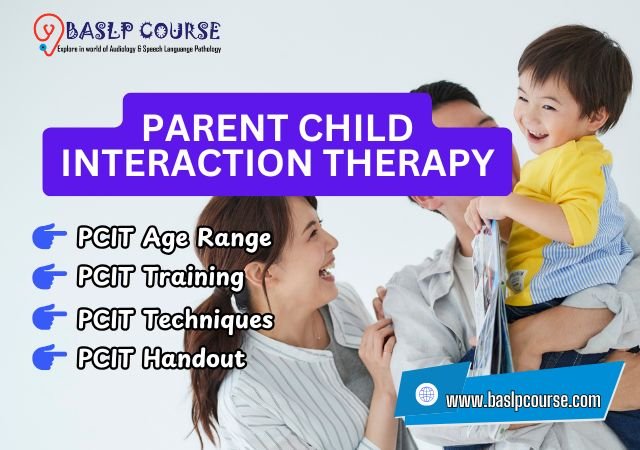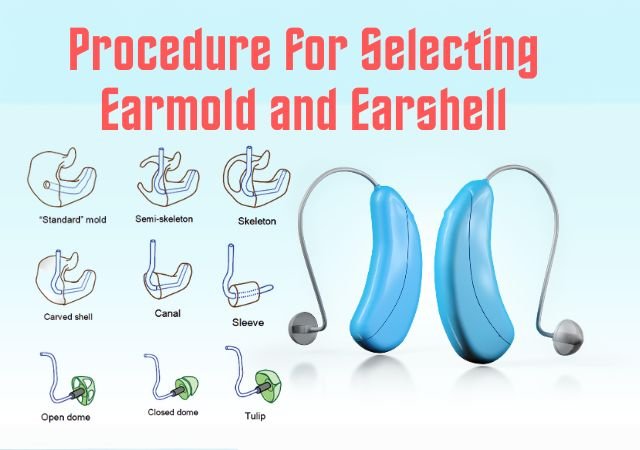What is Speech Language Pathology?: Communication is a fundamental pillar of most interactions we have in the world, so you can imagine how critical Speech Language Pathology (SLP) is to our daily lives! Speech Language Pathologists (SLPs) are specialized medical professionals trained in the assessment, diagnosis, and treatment of communication and swallowing disorders across the lifespan. SLPs use their knowledge to create, adapt, and implement strategies that help individuals and families live a full life through improved communication, whether they are children with language delays or adults recovering from neurological disorders. This complete guide explores everything there is to know about Speech Language Pathology—from historical context and academic pathways through job prospects and the future of the field—so you can decide if this rewarding career path is a good fit for you.

History of Speech Language Pathology
Early Beginnings and Evolution
The origin of Speech Language Pathology dates back to ancient civilizations where early intellectuals identified the significance of interactive communication. Philosophers and physicians started based describing observations about speech afflictions and how status egos had at the daily life. However, it did not evolve as a recognized healthcare specialty until the 20th century.
- Pioneering Efforts: Early pioneers laid the groundwork by documenting speech disorders and… Over time, basic investigation gave rise to standardized columns of assessment tools andtherapeutic methods.
- Professional Organizations: Professional organizations such as the American Speech-Language-Hearing Association (ASHA) in theUnitedStateswereformed and formal training and ethical guidelines were established. They have a lasting influence on curriculum development, research and certification processes worldwide.
- Technological Advances: With each passing year, there are significant technological and research developments that continue to provide insights into the underlying mechanisms of neurological, developmental, and acquired communication disorders and propel improvements in treatment options.
Key Milestones
- Early 1900s: Initial research and informal treatment methods for speech impairments.
- Mid-1900s: Establishment of formal training programs and the first professional associations.
- Late 1900s to Present: Incorporation of evidence-based practices, research, and technological innovations in both diagnosis and therapy.
Introduction to Speech Language Pathology
Speech Language Pathologists (SLPs) specialize in treating and preventing communication and swallowing disorders. Their research covers a wide variety of conditions including:
- Speech Sound Disorders: Difficulties with pronunciation and articulation.
- Language Disorders: Issues with understanding or using language.
- Fluency Disorders: Such as stuttering, which affects the flow of speech.
- Voice Disorders: Problems related to pitch, volume, or quality of the voice.
- Swallowing Disorders: Also known as dysphagia, which can impact safe and effective eating and drinking.
SLPs create individualized treatment plans using traditional therapy techniques and cutting-edge technology to support people as they work through these difficulties. The overall aim is to provide better communication skills and thus a better quality of life.
Speech Language Pathology Courses
Typically, a career in Speech Language Pathology begins with a strong educational base. Here’s a rundown of the courses available in various regions:
Speech Language Pathology Courses in the USA
The program consists of a two year post graduate curriculum emphasizing theoretical and clinical practice in the assessment and treatment of communication disorders. The course combines theoretical classroom content with clinical practicum learning experience to graduates with the tools to excel in practice.
Speech Language Pathology Courses in India
Diploma In Speech & Hearing is also there that offers theory as well as practical knowledge in this field, which teaches about prevention, identification, and audit of different communication disorders and speech impairments. An introductory undergraduate program that integrates both audiology and speech-language pathology. Unprofessional degree for additional coaching of keens to become admitted to practice as a professional expert.
- DHLS (Diploma in Hearing Language & Speech)
- BASLP (Bachelor in Audiology & Speech Language Pathology)
- M.Sc. Speech Language Pathology
Speech Language Pathology Courses in the UK
Specialist courses were covered earlier this year and are described in the section on postgraduate training for speech and language therapists in this discussion paper. A master’s program that provides advanced training and research opportunities in speech and language therapy.
Course Comparision Table
| Region | Course Name | Duration | Key Focus Areas |
| USA | Master of Speech Language Pathology | 2 years | Diagnosis, therapy, clinical practicum |
| India | DHLS | 1 years | Foundational skills in speech and hearing disorders |
| India | BASLP | 4 years | Undergraduate education in audiology and speech therapy |
| India | M.Sc. Speech Langauge Pathology | 2 years | Advanced clinical training and research |
| UK | BSc Speech and Language Therapy (SLT) | 3-4 years | Introduction to speech therapy principles |
| UK | MSc Speech and Language Therapy (SLT) | 1-2 years | Advanced practices and evidence-based research |
Scope of Speech Language Pathology
Communication is an essential part of socialising, academia and just general living. SLPs help people with speech sound disorders, language delays, stuttering, voice issues and problems with swallowing. Speech pathologists not only work with speech, but with language as well, making them quite versatile.
- Speech Sound Disorders: Helping clients produce sounds correctly.
- Language Disorders: Enhancing both receptive (understanding) and expressive (speaking) language skills.
- Voice Disorders: Correcting issues related to pitch, volume, and quality.
- Fluency Disorders: Managing conditions like stuttering through targeted therapies.
- Swallowing Disorders: Providing crucial support for individuals with dysphagia, ensuring safe swallowing.
Areas of Practice
SLPs work in diverse settings, making their expertise applicable in various domains:
- Education: Assisting children with language delays in schools.
- Healthcare: Providing rehabilitation for patients recovering from strokes, brain injuries, or neurological conditions.
- Community Programs: Supporting individuals with developmental disabilities.
- Research: Contributing to academic and clinical research that drives advancements in treatment methodologies.
Job Opportunities after Speech Language Pathology
There are many career paths available for SLPs. They work in a variety of settings, including schools, hospitals, rehabilitation centers, private practices, and research institutions. Accordingly, SLPs can excel at finding a niche that resonates with their interests and passions.
Being an SLP is an incredibly rewarding career. SLPs see all that individuals learn in thriving in their communication skills, which is the most rewarding experience. But it also has challenges, including handling emotionally challenging cases and keeping abreast of new research and therapies.
Career Settings
- Schools: SLPs work closely with children facing speech and language challenges, often within special education programs.
- Hospitals and Rehabilitation Centers: They support patients recovering from surgeries, strokes, and traumatic brain injuries.
- Private Practices: Many SLPs establish their own clinics, offering specialized services to a broader community.
- Research Institutions: Engaging in clinical research to innovate and improve treatment methodologies.
- Community Health Programs: Collaborating with community organizations to provide accessible services for underserved populations.
Key Job Titles
- Clinical Speech Language Pathologist
- Pediatric Speech Therapist
- Rehabilitation Specialist
- Voice Specialist
- Research Coordinator in Communication Disorders
Benefits of a Career in SLP
Impactful Work: SLPs make a tangible difference in the lives of individuals and families by enhancing communication skills and improving quality of life.
Personal Fulfillment: Witnessing significant improvements in clients’ communication abilities can be incredibly rewarding.
Diverse Work Environments: Opportunities abound in various settings, allowing professionals to find a niche that suits their interests.
Continuous Learning: The field is ever-evolving, offering continual professional development and learning opportunities.
Salary after Speech Language Pathology
Salary expectations for Speech Language Pathologists vary depending on location, experience, and work setting. While figures can fluctuate, here’s a general overview:
Salary Ranges by Region
- USA: The median annual salary for SLPs in the United States typically ranges from $60,000 to $90,000. Factors such as geographic location, work experience, and type of institution (e.g., hospital vs. school) can influence earnings.
- India: In India, starting salaries for SLPs are generally lower compared to Western countries, with experienced professionals earning significantly more. Salaries often range between INR 3,00,000 to INR 8,00,000 per annum, depending on expertise and location.
- UK: In the United Kingdom, salaries for SLPs usually fall within the range of £25,000 to £40,000 for entry-level positions, with experienced practitioners earning upwards of £45,000 annually.
Example Salary Table
| Region | Entry-Level Salary | Experienced Professional Salary |
|---|---|---|
| USA | $60,000 – $70,000 | $80,000 – $90,000 |
| India | INR 3,00,000 – INR 4,50,000 | INR 6,00,000 – INR 8,00,000 |
| UK | £25,000 – £30,000 | £40,000 – £45,000+ |
Note: Salaries are approximate and can vary based on several factors.
Is Speech Language Pathology a Good Career Option?
Choosing a career in Speech Language Pathology is a decision that involves careful consideration of both the rewards and challenges. Here are some key reasons why SLP can be a fulfilling and sustainable career:
Reasons to choose speech language pathology as a career:
- Impactful Work: SLPs play a crucial role in helping people communicate effectively, leading to improved social and professional outcomes.
- Diverse Work Settings: With opportunities in schools, hospitals, private practice, and research, SLPs can choose an environment that aligns with their interests and strengths.
- Job Security: As awareness of communication disorders increases, the demand for skilled SLPs continues to grow.
- Continuous Professional Growth: The field offers ongoing opportunities for professional development and specialization.
Challenges to Consider
- Emotional Demands:
Working with individuals facing severe communication challenges can be emotionally taxing. - Educational Investment:
A master’s degree is generally required, which entails a significant commitment of time and resources. - Keeping Up-to-Date:
The need for continuous learning and staying abreast of evolving research and techniques.
In the end, as long as you have a desire to make a positive difference in the lives of others, and also a dedication to learning for life, Speech Language Pathology is the right career for you. A blend of scientific rigour and compassionate care, you will be pushed and rewarded as you grow through your career.
Top Speech Language Pathology Colleges Across the World
In fact, the key to a successful career in Speech Language Pathology is high-quality education. Here is a packed list of among the better lewd schools worldwide that provide high level programs in SLP.
Top Speech Language Pathology Colleges in the USA
- University of Iowa
- Vanderbilt University
- University of Wisconsin-Madison
- University of Washington
- Northwestern University
Top Speech Language Pathology Colleges in India
- All India Institute for Speech and Hearing – AIISH Mysore
- Ali Yavar Jung National Institute of Speech and Hearing Disabilities – AYJNISHD Mumbai
- National Institute of Speech & Hearing – NISH Kerala
- Post Graduate Institute of Medical Education and Research – PGIMER Chandigarh
- Ali Yavar Jung National Institute of Speech and Hearing Disabilities – AYJNISHD Kolkata
- Kasturba Medical College – KMC Mangalore
- National Institute for Empowerment of Persons with Multiple Disabilities – NIEPMD Chennai
Top Speech Language Pathology Colleges in the UK
- University of Manchester
- Birmingham City University
- City, University of London
- Leeds Beckett University
- Manchester Metropolitan University
- Queen Margaret University
- University College London
Certification in Audiology across the World
Once prospective SLPs finish their education, they must get licensed in the states they wish to practice in. Most pursue certification through ASHA or similar organizations to show that they have the respective knowledge of the population they serve and is a commitment to the profession.
Speech Language Pathology Certification in the USA
- Certificate of Clinical Competence in Speech Language Pathology (CCC-SLP)
- Speech Language Pathology Assistant Certification (C-SLPA)
Speech Language Pathology Certification in India
- Central Rehabilitation Register (CRR) for Audiologist and Speech Therapists
- RCI CRR Registration CRE Points | Calender | Check Online Status
Speech Language Pathology Certification in the UK
- Royal College of Speech and Language Therapists (RCSLT)
- The Health and Care Professions Council (HCPC)
Certification is a critical step in establishing credibility and ensuring adherence to professional standards in Speech Language Pathology.
Future of Speech Language Pathology
The field of Speech Language Pathology is rapidly evolving, driven by technological advancements and an increased understanding of communication disorders. Here are some key trends shaping its future:
Technological Integration
- Telepractice: The expansion of telehealth services allows SLPs to reach clients in remote areas, ensuring access to quality care regardless of geographical limitations.
- Innovative Tools: The use of AI-driven diagnostic tools, virtual reality therapy, and mobile applications is transforming assessment and treatment methodologies.
- Data-Driven Approaches: Advances in data analytics and research are leading to more personalized treatment plans based on real-time feedback and outcomes.
Interdisciplinary Collaboration
- Collaborative Care Models: Increasingly, SLPs work alongside other healthcare professionals—such as occupational therapists, neurologists, and educators—to provide holistic care.
- Research and Innovation: Ongoing research into neuroplasticity and communication disorders is paving the way for new therapies and intervention strategies.
Growing Demand and Global Recognition
- Aging Populations: With aging populations and increased awareness of stroke rehabilitation, the demand for SLPs is expected to rise significantly.
- Inclusive Education: As schools and communities strive for inclusivity, the role of SLPs in supporting children with special needs is becoming more critical.
- International Collaboration: Global partnerships and standardization in certification and training will likely enhance the mobility and recognition of SLP professionals worldwide.
Essential Skills and Qualities for Speech Language Pathologists
While academic and clinical knowledge are important for a successful career in Speech Language Pathology, there are some other personal and professional attributes you will find yourself utilizing on a daily basis. Here are a few characteristics that all SLPs should master:
- Lifelong Learning: A commitment to continuous professional development and staying updated with the latest research.
- Empathy and Patience: Understanding the challenges faced by individuals with communication disorders is vital.
- Strong Communication Skills: Clear, concise, and compassionate communication is at the core of effective therapy.
- Analytical Skills: Ability to assess, diagnose, and tailor treatments based on individual needs.
- Creativity: Developing innovative and engaging therapeutic activities.
Conclusion
Speech Language Pathology is not just a career; it is a calling to empower people through improved communication skills. What Makes SLP Unique From its rich historical roots and rigorous academic pathways to the myriad job opportunities and promising future trends, SLP stands out as a field that marries scientific expertise with human compassion. So whether you are a student thinking about your future or a professional transitioning into a career change, this guide shows that Speech Language Pathology is a truly rewarding, impactful, and decades-strong career option.
In the modern world, where communication lays the foundation for success, SLPs help to ensure that every voice is heard, and every story is shared. Once you get on that path, just keep going, and you might discover that this work can stretch your brain in ways you never thought possible, but also reward your heart, too.
FAQs related to Speech Language Pathology
The primary role of an SLP is to assess, diagnose, and treat communication and swallowing disorders. They work with individuals across the lifespan to improve their ability to communicate effectively.
Becoming an SLP typically involves completing a master’s degree program, which takes about two years after obtaining a bachelor’s degree.
SLPs can work in a variety of settings, including schools, hospitals, rehabilitation centers, private practices, and research institutions.
The demand for SLPs is expected to grow due to an aging population and increased awareness of communication and swallowing disorders, leading to a positive job outlook.
SLPs make a significant difference by helping individuals overcome communication challenges, enabling them to connect with others, succeed in their education and careers, and enjoy a higher quality of life.
References:
- Indian Speech and Hearing Association (ISHA)
- American Speech and Hearing Association (ASHA)
You are reading about:
What is Speech Language Pathology?








Notes